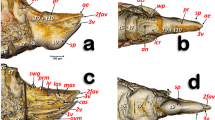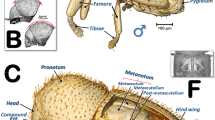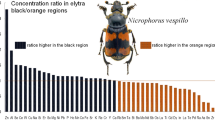Abstract
RECENT publications of Commoner, Townsend and Pake1 and Truby and Goldzieher2 have shown the value of electron-spin resonance studies in detecting the presence of free radicals in biological tissues. During the course of a survey of free radicals in biological tissues we noted that two tissues in particular gave strong signals. These were seeds of Allium cepa, the onion, and larvæ and adults from Calliphora vomitoria, the blow fly.
This is a preview of subscription content, access via your institution
Access options
Subscribe to this journal
Receive 51 print issues and online access
$199.00 per year
only $3.90 per issue
Buy this article
- Purchase on Springer Link
- Instant access to full article PDF
Prices may be subject to local taxes which are calculated during checkout
Similar content being viewed by others
References
Commoner, B., Townsend, J., and Pake, G., Nature, 174, 689 (1954).
Truby, F., and Goldzieher, J., Nature, 182, 1371 (1958).
Author information
Authors and Affiliations
Rights and permissions
About this article
Cite this article
EDWARDS, M., KERKUT, G., MUNDAY, K. et al. Electron Spin Resonance Investigations of Allium cepa, and Calliphora vomitoria . Nature 184, 1402–1403 (1959). https://doi.org/10.1038/1841402a0
Issue Date:
DOI: https://doi.org/10.1038/1841402a0
This article is cited by
Comments
By submitting a comment you agree to abide by our Terms and Community Guidelines. If you find something abusive or that does not comply with our terms or guidelines please flag it as inappropriate.



